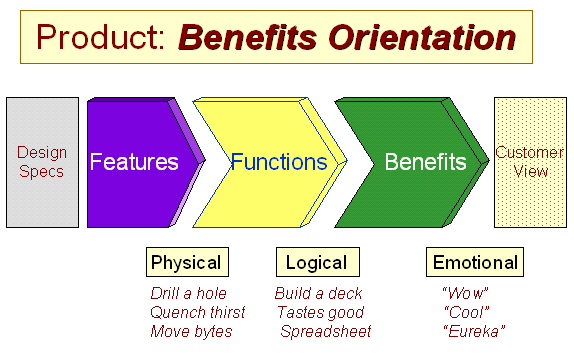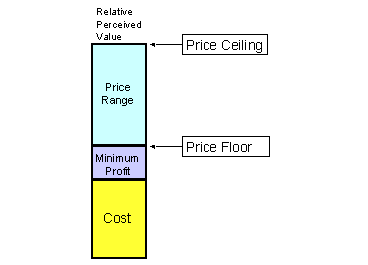
The Science of Customer Retention: Increase your Revenue without Closing Another Deal
Every agency owner would love to double his or her revenue. Most wish for more leads, a bigger marketing budget and a bigger sales team. But let’s take a look at another path, one that may not require additional team members and larger marketing budgets. Let’s talk about how good Sales and Account Management can increase your revenue and double your retention.
In our business we work with hundreds of small web design and SEO agencies that outsource a portion of their deliverables to us. That means we get a bird’s eye view of what an average small business SEO engagement looks like. We have a few agencies whose average customer life is a year or more but for the majority, it is much shorter. In our typical agency partnership, the agency handles account management and we take on campaign execution. This creates an interesting scenario where we control the execution and effectiveness and observe the role that account management plays in customer retention.
The Financial Case for Account Management
Before we get into how account management impacts retention, let’s look at the financial impact of churn. On a simplistic level, think of churn as how long it takes to turnover your entire roster of clients. If your average customer stays with you for six months, that means you will turn over your entire roster of clients twice in a year.
Six Month Retention = Lose Every Client Twice This Year!
According to the American Marketing Association, the average company loses 10% of its customer base per year. As a comparison, a company with a six-month retention losses 200% of its customer base per year.
What Is the Science of Retention?
First, let’s look at how Consumer Packaged Goods companies might explain customer retention. I went back to some notes from my marketing strategy professor Ken Homa at Georgetown University.
The science of retention is really based on the idea of Customer Satisfaction and Relative Perceived Value. Buyers make decisions based on the benefit of a service. At its most basic level the benefit of an SEO service is increased business from the Internet. The customer must also determine the value of increased business from the Internet. This is where the SEO salesperson comes into play. If you set expectations too low, the customer will never see the value in the service and look for other options. If you set expectations too high, the service won’t be able to meet expectations. If your agency is able to make the delivered value meet or exceed the perceived value, the customer stays.

Source: Ken Homa Online Notes
Customers can’t make a decision on perceived benefits alone. They need to compare the benefits to the price in order to determine the value. The graphic below shows how companies can set their price somewhere between their cost + fair markup and the customer relative perceived benefit. Again the SEO Salesperson plays a big role in setting the customer’s relative perceived benefit. The company can then decide to set the price high and skim as many high paying customers as they can or cede some of the value to the customer and go for a higher close rate. Of course, you can also price above the Relative Perceived Value but very few customers would buy your service.

Source: Ken Homa Online Notes
A Vicious Cycle Emerges
Given that the SEO Salesperson plays an important role in setting the Relative Perceived Value of an SEO campaign, customer satisfaction and retention start much earlier than one might think. When an SEO Salesperson is faced with replacing their entire customer base twice per year, they oversell SEO and set unrealistic expectations with their customer. Customers don’t see the value they were promised and they leave. This exacerbates the trend and leads to even higher churn. In the scenario below, if you break the trend and cede value to the customer it can actually improve your top line (and your bottom line).

Benchmark for SEO Engagement
There is no data to be found about the average length of an SEO campaign. That is because there isn’t any particular standard for an engagement. SEO agencies sell packages that range from one-time assessments with a minimal amount of ongoing support to engagements where an agency manages an extensive ongoing content marketing program. From personal experience, I have broken out retention into the following matrix that incorporates the diversity of services and the type of engagement. I highlighted the cells to show the type of engagements with the highest retention (green) and the lowest (red).

Example projects only. This list is not exhaustive.
The DOs and DON’Ts of SEO Customer Retention
Here are some steps to break the cycle of overselling SEO and increase your retention from 6 months to 12 months and beyond:
DO
- Establish your baseline early. Make sure you implement all of the tracking that you discussed in the sales process. Whether that is traffic from an analytics package, phone tracking, rankings, etc., get all of it set up in the first week after signing the client.
- Show case studies. Show some examples of clients who have worked with you over time. This is a great way to show that it took time to accomplish their objectives. Point out that if the client had decided to stop after six months or even one year, they would not have good results.
- Give your clients milestones. Talk about the roadmap and the effort that will be required. You basically want to prepare yourself for the meeting 90 or 120 days from the start of the project when your client is having doubts about the investment. Being able to pull out a document that they had seen during the sales process and explain exactly where they are will help them build the confidence to stay the course.
-
Celebrate Success. Find ways to communicate small wins during the SEO engagement. Some examples might be:
1) Successful implementation of Google Analytics (setup a training session)
2) Search engine index updates that incorporate changes made during the campaign
3) First phone call tracked from an organic source
4) First web lead from an organic source
5) Growth in non-branded traffic
6) Growth in organic landing pages in Google.
Each success (no matter how small) is a time to reinforce the finesse of the program you are running and that the milestones you have set are realistic. - Under Promise and Over Deliver. You want the sale, but make sure you are in line with both your team’s ability to execute and the SEO process.
DON’T
- Guarantee Rankings. People really want this but if they understood how little direct control that the SEO company has over rankings, they would see how crazy it is to offer guaranteed rankings.
- Make a promise that SEO is a one-time project. There are certainly one-time projects like an SEO audit or claiming a local listing but SEO is an ongoing initiative.
- Focus on the impossible.
- Yes, everyone wants to rank on their head terms (i.e., popular, competitive, high search volume keywords) in the first 30 days. But that is impossible. In my experience, head terms are multi-year efforts if they are even possible on the client’s budget and business. Lay the groundwork early that success comes from progress against the head term as well as the more attainable keywords.
In Summary
No one wants to be on a treadmill where they have to run faster and faster to replace the clients that are leaving their business. The biggest lesson we can learn in retaining SEO clients is to think about retention during the sales process. What you say and do will be the basis of what you are judged on 90 or 120 days down the road.
This YouMoz entry was submitted by one of our community members. The author’s views are entirely their own (excluding an unlikely case of hypnosis) and may not reflect the views of Moz.




Comments
Please keep your comments TAGFEE by following the community etiquette
Comments are closed. Got a burning question? Head to our Q&A section to start a new conversation.